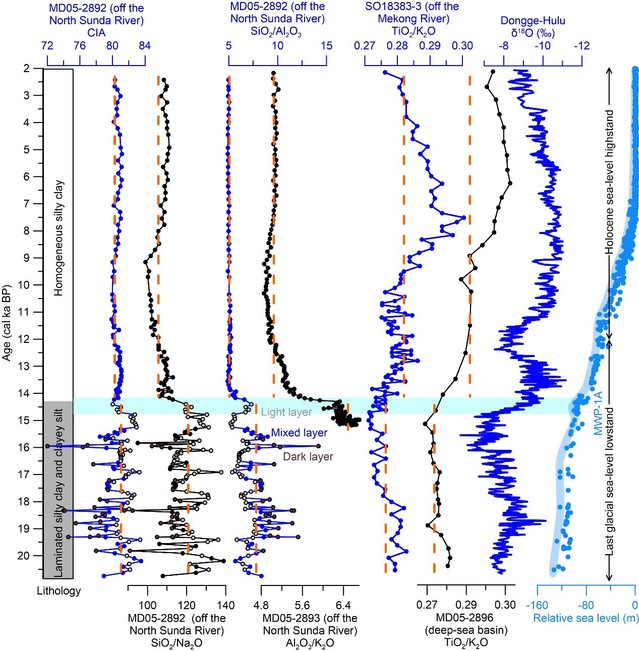Hongchao Zhao,
State Key Laboratory of Marine Geology, Tongji University, Shanghai 200092, China
Abstract:
High-resolution major element geochemistry of Core MD05–2892 from the lower Sunda Slope was analyzed to investigate the variation of chemical weathering records and its controlling factors in the southern South China Sea since the last glaciation. Chemical index of alteration (CIA) and SiO2/Na2O ratio were selected as chemical weathering proxies. The values of the proxies are higher during the last glaciation than during the Holocene. We attribute this to the provenance shift caused by sea level change. Provenance analysis indicates that the Malay Peninsula and Sumatra were the major sediment sources for the study region during the last glaciation, while the Indochina Peninsula has been the major source since the early Holocene. Accordingly, the weathering evolution analysis reveals increased physical erosion in the Malay Peninsula and Sumatra during enhanced East Asian summer monsoon rainfall, while increased chemical weathering in the Indochina Peninsula during the intensified monsoon rainfall. Therefore, the chemical weathering records of the deep-sea sediments in the southern South China Sea were regulated by monsoon rainfall-driven physical erosion in the Malay Peninsula and Sumatra during the last glaciation, while the records have been influenced by monsoon rainfall-induced chemical weathering in the Indochina Peninsula since the early Holocene. This study emphasizes that higher weathering values of the deep-sea sediments during the last glaciation could be related to the provenance variation driven by sea level change, rather than to enhanced chemical weathering in the same provenance.
Full Article:https://doi.org/10.1016/j.gloplacha.2023.104324



